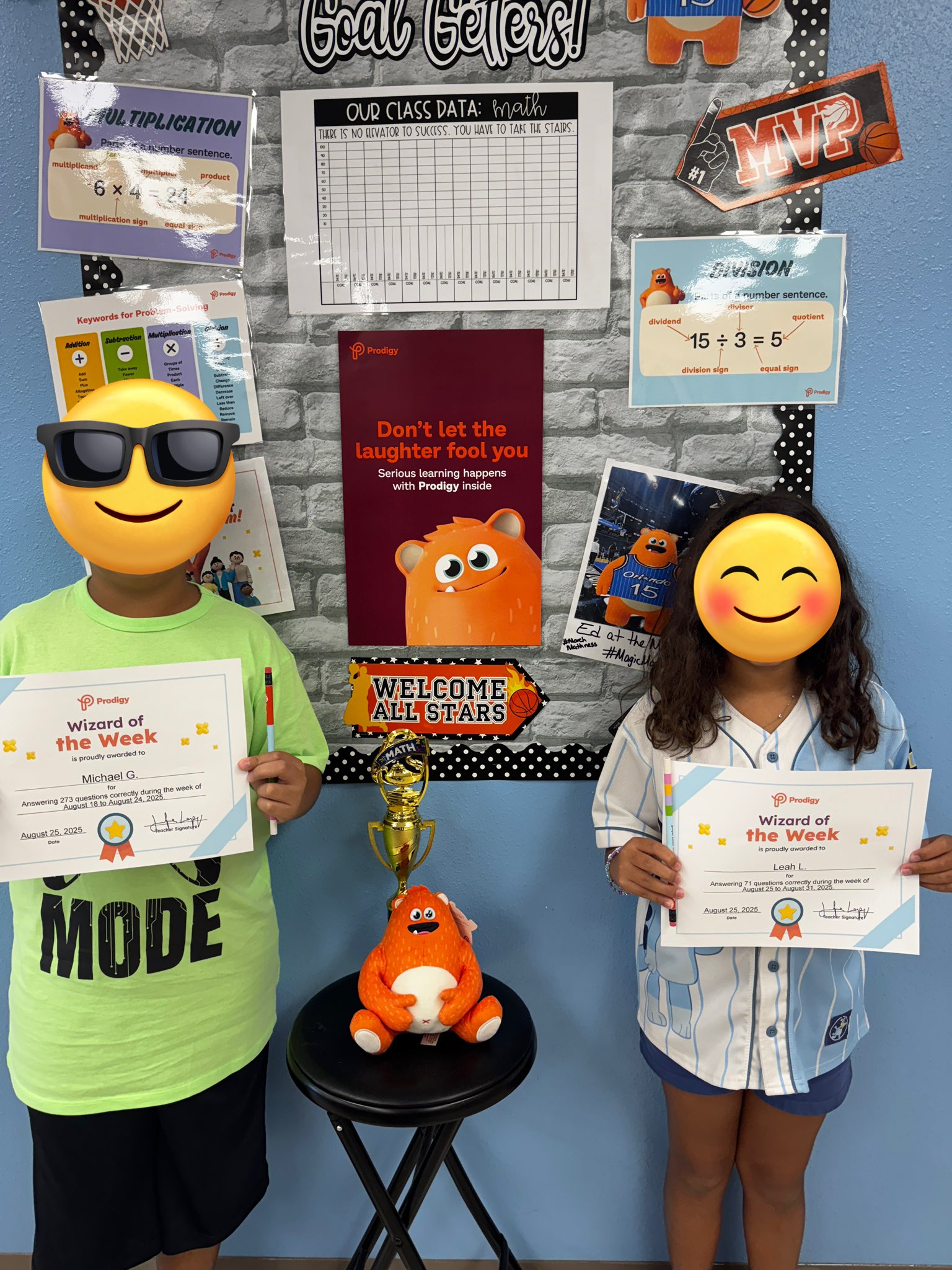National Video Games Day: 7 Fun Ways to Level-up Your Classroom

Summer is over, but that doesn’t mean the fun has to stop!
For those of you eagerly counting down to the next holiday, we have good news. There’s another special day happening very soon -- one dedicated to a love of gaming.
Help celebrate the start of the new school year with National Video Games Day on Sept. 12.
On this day, video game fans take time to showcase one of their favorite activities and enjoy games with friends.
As a teacher today, you probably have quite a few young gamers in your class. So we’ve put together seven interactive ways to celebrate National Video Games Day in your classroom this year!
How did video games begin?
The history of video games began in the 1950s, when computer scientists started adding games to their designs.
Fast forward two decades to the 1970s. Video games finally became available -- and popular -- to the general public. Simple (but not easily accessible) computer games gave way to arcades, along with individual games on consoles and home computers.

PONG, released by Atari in 1972, was one of the first arcade video games. Video games quickly became a treasured activity found in many households. Now, most of us can’t imagine our lives without them. In fact, a 2014 study found 97% of American children and adolescents play for at least an hour every day!
National video games day
It can sometimes feel like there’s a “day” for nearly anything lately (for example, Sept 19 is the can’t-miss National Meow Like a Pirate Day). But whether it’s a recognized day or any other time of the year, video games definitely deserve to be appreciated.
A quick Google search brings up two possible dates to celebrate video games: July 8 and Sept. 12. Some sites say they’re different days and should be celebrated separately, while others claim one of the dates is wrong.
So, who’s right? Which one should we celebrate?
The Video Game History Foundation explored this question. They believe the July 8 and Sept. 12 days are actually the same. Old publications seem to show a shift in the date, going from July 8 to July 12 to Sept. 10 and finally landing on Sept. 12 in 1997.

Found in The Teacher’s Calendar School Year 2008-2009
The September date became widely recognized. Now, many people -- and organizations -- celebrate every year. Some companies even use it as an opportunity to raise money and give back to the community.
So, what are you waiting for? Join the fun and celebrate!
Video games as a learning tool
We all know how much kids love video games. But do you know how much they can actually help kids learn?

One study on children and adolescents from San Diego State University and the University of Georgia found no difference in psychological well-being between non-users and low users, suggesting there may be a “sweet spot” when it comes to video games and digital platforms.
In reasonable doses, video games and game-based learning have plenty of great benefits -- positively impacting:
- Memory and cognition
- Vision and hand-eye coordination
- Technological fluency
- Problem-solving
- Social skills (through online bonding and in-person bonding over shared interests)
- Attention and concentration
- Multitasking
- Skill building
In fact, the World Health Organization even classified gaming disorder as a diagnosable issue.
Much like most things in life, though, video games are quite beneficial -- in moderation. Plus, kids love them. This makes them a great way to make learning fun at your school.
7 Interactive ways to celebrate video games in your classroom
Video games have great benefits, but how do you incorporate them into your classroom?
Check out the seven ideas below to give your class their most memorable National Video Games Day ever!
1. Gamify your classroom
Gamification is a proven educational method that’s gained lots of traction in the past few years.
Adding video game elements to traditional classroom instruction helps teachers engage their students and motivate them to learn more.
There are plenty of ways to gamify your classroom. Turn assignments into quests, or replace regular grades with XP and use charts to visualize progress.

Gamified progress tracking, like in the example above, captures students’ attention and improve their mastery of educational skills.
2. Decorate your classroom
No celebration is complete without some decorations!
Switch up your current classroom theme and add some video game imagery for you and your students to enjoy.
Get as creative as you like with this task. Make a video game bulletin board, cover your door with game elements, place pictures of game characters around the room to reinforce class guidelines -- or add any other fun designs you want.

A Prodigy bulletin board created by Patricia G., a technology instructor at Eastwood Elementary School.
If you really want to make an impact, make sure to welcome input from your students on which decorations to add!
3. Make video game-themed assignments
There’s so much more to video games than just playing them.
The storyline, themes and characters of each game often lead to an entire fanbase with its own culture. This is great news for you, because it means you can take the video game themes out of the game itself and integrate them into your lessons.
With a bit of imagination, you can turn almost any assignment into an exciting quest -- straight from your students’ favorite games!
For example, giving your students worksheets featuring elements of a video game they love, like Fortnite, Minecraft, or Prodigy, can boost their interest -- and their productivity, as a result.
Prodigy math worksheets -- examples
There are loads of other ways to work video games into assignments. For instance, have students create their own video game or take inspiration from this teacher, who designs math questions around Fortnite maps.
4. Create video game art projects
1UP your video game assignments with creative art projects!
Get your students to make their own video game costumes, like the Pong costume featured below.
Letting kids make art related to their interests is a great way to spark artistic minds and encourage them to keep creating. Plus, it gives you a chance to be creative in the projects you give them.
5. Use a video game station rotation
Station rotations are a popular and effective way of capturing students’ attention. This blended learning model can be adapted in all kinds of ways -- and it’s a great way to support various learning styles in your classroom.
Here’s how to take your traditional lesson plan to the next level: arrange a rotation that’s full of video game stations!
Use games on tablets, computers, consoles, or whatever you have available for a dynamic rotation that works for your class.
Use educational games kids love to keep their attention and give them some valuable learning time. Try these ones:
1. Prodigy
Prodigy is the no-cost online math game loved by over 50 million students and 1.5 million teachers around the world.
Players take their unique characters on exciting adventures, where they answer math questions from more than 1,500 curriculum-aligned skills across 3 DOK levels to succeed in the game.
Not only do kids love playing it, but theTeacher Dashboard also lets teachers like you target specific skills and differentiate to support student needs. It’s a win-win for everyone!
2. Minecraft: Education Edition
Minecraft is a popular game with kids across the globe, and its “Education Edition” brings project-based learning into the Minecraft world, with specially crafted lessons and activities.
Minecraft: Education Edition focuses on important STEM topics like computer science, elementary math, biodiversity and chemistry. The activities also work to instill collaboration and creativity in kids.
3. Home Base by Scholastic
With Home Base, students explore a digital world that features their favorite books and characters. This children's game from Scholastic combines learning, literature and fun into one exciting package!

Image source: Scholastic
Players go on explorations and play lots of different minigames. Plus, Home Base features real books kids can read outside the game.
6. Host a tournament
Why do kids love video games so much? The competitive nature of these games plays a huge role. Too much competition can get unhealthy, but video games often let kids “battle” one another in a productive way.
Spark some healthy competition in your classroom with a video game tournament. Host a class tournament, or get your whole school involved!
When you run a Prodigy tournament, for example, your Teacher Dashboard will display a leaderboard of the top students and your Reports tool can show in-depth info of their activity, comprehension and skill levels. This makes it easy to host a class tournament any time. When it’s complete, you can easily award the top 3 students with any prize you choose!
And now you can amp up school pride and earn exciting monthly rewards—from the State Challenge all the way to the Prodigy National Cup finals! Prodigy's State Challenge is the world’s biggest math competition.
7. Share your fun on social media
If your social network doesn’t see your National Video Games Day celebration, did you really celebrate?
Social media is a great way to share all the hard work you put into transforming your classroom. And you can take inspiration from others, too!
For example, post a tweet or an Instagram photo to show your social network that you’re celebrating the holiday, using the hashtag #NationalVideoGamesDay (but make sure you get permission from parents first).
Final thoughts: National Video Games Day
Video games are such a huge part of today’s culture, and we think their significance deserves some enthusiasm!
Although National Video Games Day only comes once a year, you can use these ideas to celebrate your classroom’s love of gaming any time you want.
Use these 7 tips whenever you feel like adding a little virtual entertainment to your curriculum and engaging the gamers in your class.
Create or log in to your teacher account on Prodigy -- a no-cost, game-based learning platform for math that’s easy to use for educators and students alike. Aligned with curricula across the English-speaking world, it’s loved by more than 1.5 million teachers 50 million students.





%20(1).png)





